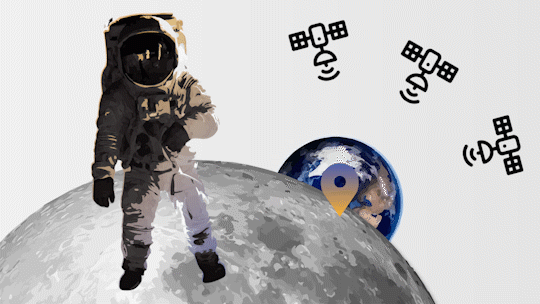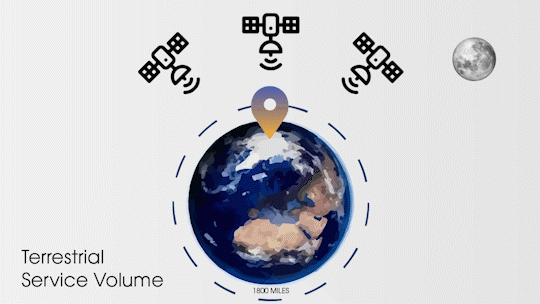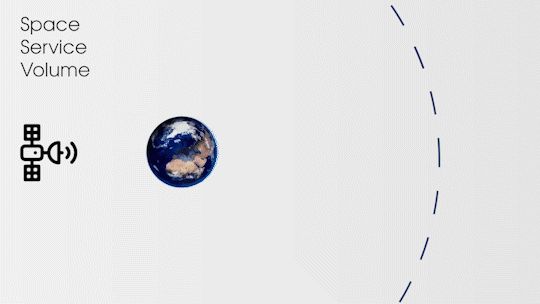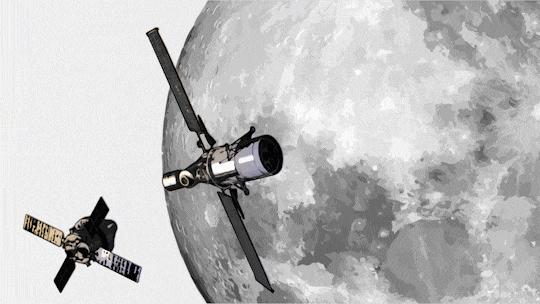
The next generation of lunar explorers – the Artemis generation – will establish a sustained presence on the Moon, making revolutionary discoveries, prospecting for resources and proving technologies key to future deep space exploration. To support these ambitions, our navigation engineers are developing an architecture that will provide accurate, robust location services all the way out to lunar orbit.
How? We’re teaming up with the U.S. Air Force to extend the use of GPS in space by developing advanced space receivers capable of tracking weak GPS signals far out in space.

Spacecraft near Earth have long relied on GPS signals for navigation data, just as users on the ground might use their phones to maneuver through a highway system. Below approximately 1,860 miles, spacecraft in low-Earth orbit can rely on GPS for near-instantaneous location data. This is an enormous benefit to these missions, allowing many satellites the autonomy to react and respond to unforeseen events without much hands-on oversight.

Beyond this altitude, navigation becomes more challenging. To reliably calculate their position, spacecraft must use signals from the global navigation satellite system (GNSS), the collection of international GPS-like satellite constellations. The region of space that can be serviced by these satellites is called the Space Service Volume, which extends from 1,860 miles to about 22,000 miles, or geosynchronous orbit.

In this area of service, missions don’t rely on GNSS signals in the same way one would on Earth or in low-Earth orbit. They orbit too high to “see” enough signals from GNSS satellites on their side of the globe, so they must rely on signals from GNSS satellite signals spilling over to the opposite side of the globe. This is because the Earth blocks the main signals of these satellites, so the spacecraft must “listen” for the fainter signals that extend out from the sides of their antennas, known as “side-lobes.”

Though 22,000 miles is considered the end of the Space Service Volume, that hasn’t stopped our engineers from reaching higher. In fact, our simulations prove that GNSS signals could even be used for reliable navigation in lunar orbit, far outside the Space Service Volume, over 200,000 miles from Earth. We’re even planning to use GNSS signals in the navigation architecture for the Gateway, an outpost in orbit around the Moon that will enable sustained lunar surface exploration.

It’s amazing that the same systems you might use to navigate the highways are putting us on the path forward to the Moon!
Make sure to follow us on Tumblr for your regular dose of space: http://nasa.tumblr.com.





Комментариев нет:
Отправить комментарий